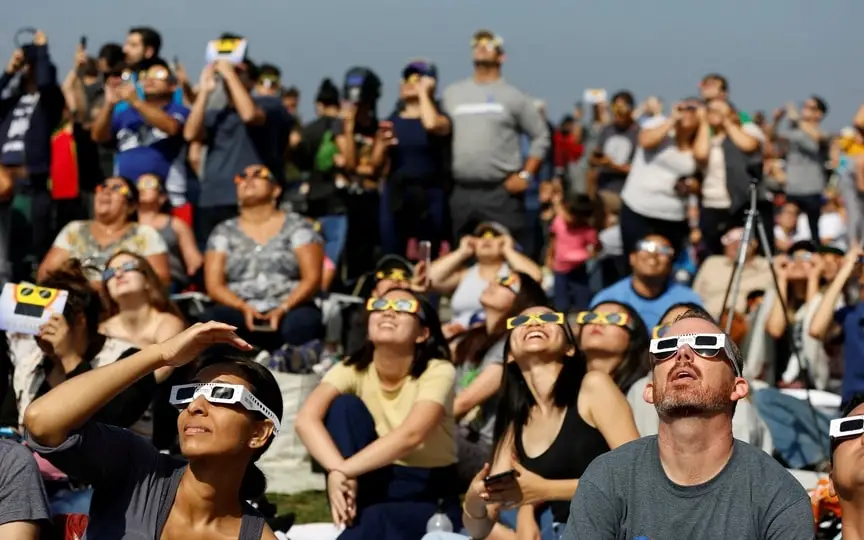Information on the October ‘ring of fire’ solar eclipse
On October 14, a solar eclipse will occur in the Americas, offering a remarkable celestial event for millions of people. If the weather conditions allow, observers will have the opportunity to witness the moon passing in front of the sun.
The eclipse is expected to be visible along a path that covers parts of the United States, Mexico and several countries in Central and South America.
Here is an explanation of the type of solar eclipse that will occur and where it will be visible.
WHAT IS THE ANCILLARY SOLAR ECLIPSE?
A solar eclipse occurs when the moon moves between the Earth and the sun, blocking the view of some or all of the face of the sun in the small path of the earth as it passes. The one happening on October 14th is a type called an “annular solar eclipse.” This happens when the moon passes between the Earth and the Sun at a time when the moon is at or near its furthest point from our planet. It does not completely cover the face of the sun, unlike a total solar eclipse.
WHY DOES IT LOOK LIKE FIRE?
Because the moon is farther than usual from Earth during an annular solar eclipse, the moon does not completely cover the sun, but instead appears as a dark disc superimposed on the sun’s larger, bright face in the sky. As a result, the eclipse momentarily looks like a ring of fire surrounding the dark disk of the moon. A total solar eclipse is scheduled to occur on April 8, 2024 over Mexico, the United States, and Canada.
WHERE DOES IT APPEAR AND WHAT IS ITS PATH?
According to the US space agency NASA, the path in the United States where the sun will be most obscured on October 14 will pass through parts of several states, starting at 9:13 a.m. PDT (12:13 p.m. EDT/1613 GMT) in Oregon, then California, Nevada, Utah, Arizona, New Mexico and Texas. The trail then crosses parts of Mexico, Guatemala, Belize, Honduras, Nicaragua, Panama, Colombia and Brazil before ending at sunset in the Atlantic Ocean. People in much larger parts of North America, Central America and South America will be able to see a lesser eclipse of the sun – still an impressive sight.
HOW BIG ARE THE EARTH, MOON AND SUN?
The moon almost covers the face of the sun as seen from Earth, only because the moon – actually much smaller than the sun – is so much closer to our planet. The Moon is 2,159 miles (3,476 km) in diameter, while the Sun is about 865,000 miles (1.4 million km) in diameter and the Earth is 7,918 miles (12,742 km) in diameter.
WHAT IS THE SAFE WAY TO WATCH AN ECLIPSE?
Experts warn that it is not safe to look directly into the bright sun without wearing special sunscreen, which can cause eye damage. Since the moon never completely covers the sun in an annular solar eclipse, it is never safe to look directly at it without such eye protection. According to experts, looking at it through a camera lens, binoculars or a telescope without a special solar filter can cause serious eye injuries. They advise wearing safe sunglasses or a safe hand-held solar viewer at all times during an annular solar eclipse. They point out that regular sunglasses are not safe for viewing the sun.
HOW DO SOLAR ECLIPSES DIFFER FROM LUNAR ECLIPSE?
Lunar eclipses occur when the Earth is between the moon and the sun and the shadow of our planet is cast on the surface of the moon. This leaves the moon looking dim, sometimes reddish in color when viewed from Earth. Lunar eclipses are visible from half of the globe, much more widely than solar eclipses.




